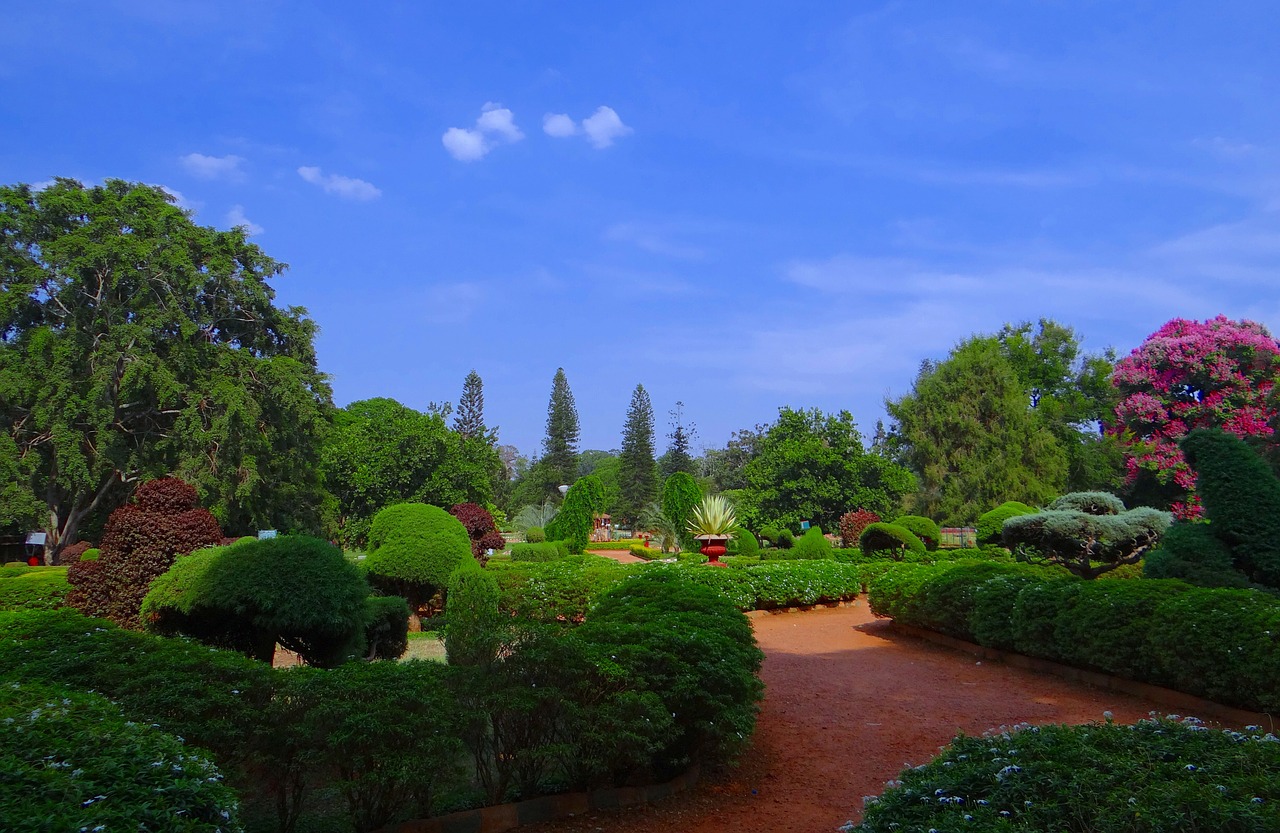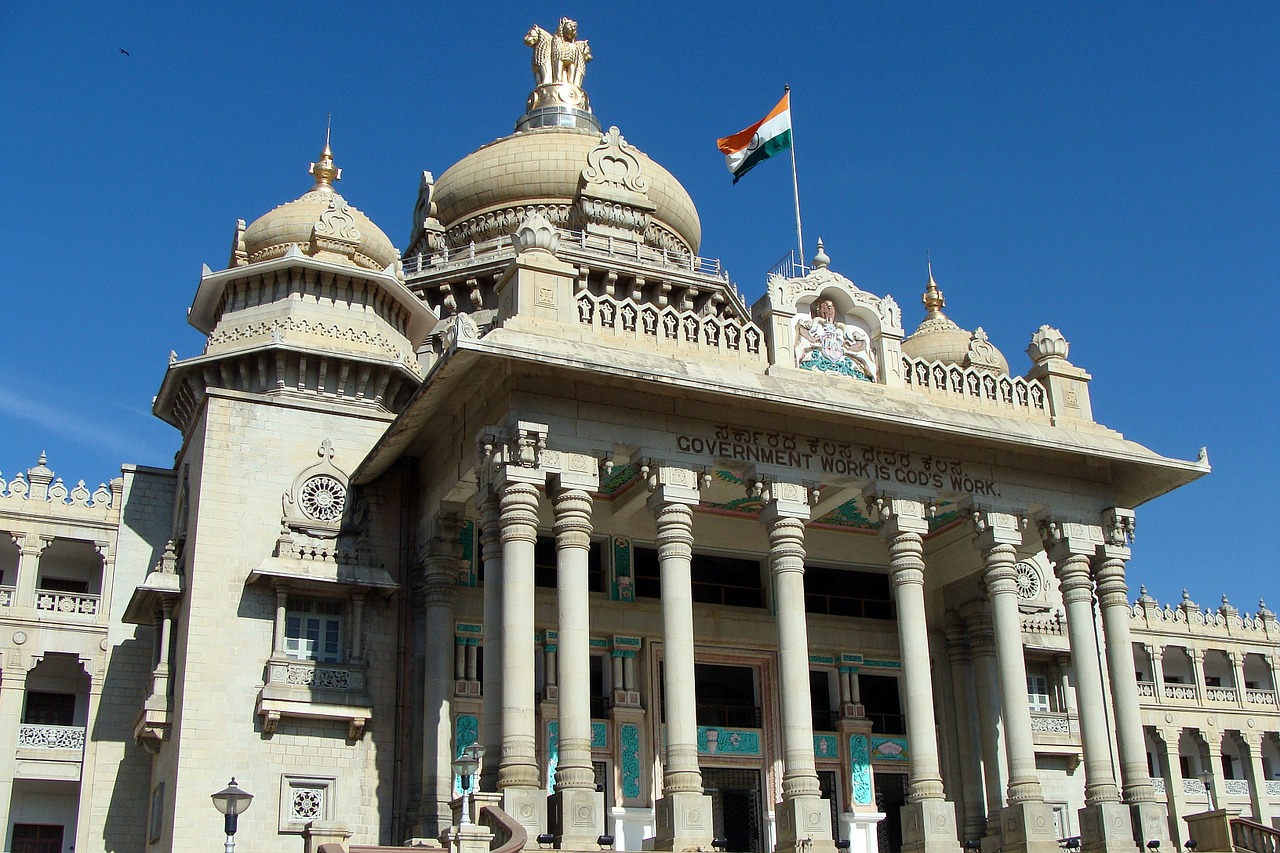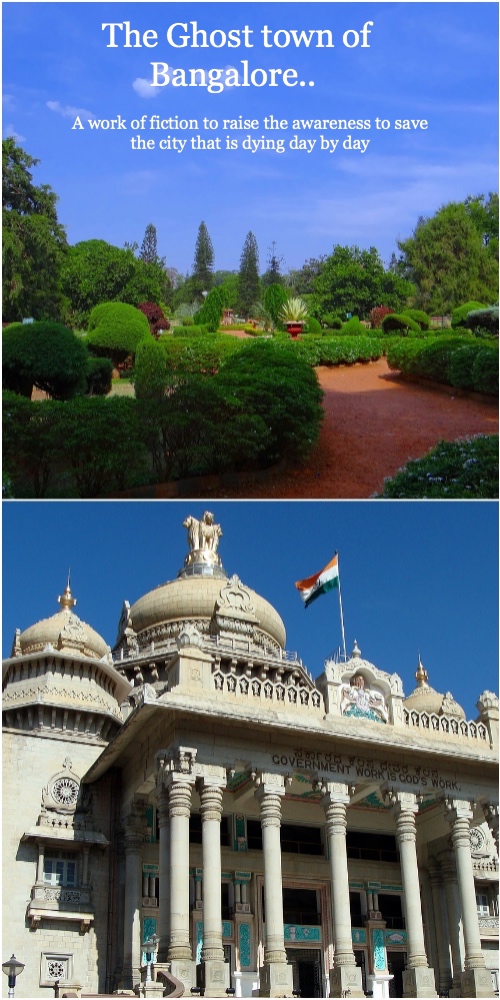2045AD, Today we take you to a tour of the ghost town or dead town called Bangalore or Bengaluru. You will find here ruins of high rise buildings that once thrived with happy families. And also big tech parks which once hosted the most renowned companies of the world. Also, the dead city has remains of several abandoned but beautiful buildings and historical structures of the past era like the Vidhan Saudha, the Tipu Sultan’s palace , The Bangalore Palace etc. to name a few. So, what was this city like in the past? And how it turned into a dead city? Read on to find out.
The Bangalore of the 1980s

In the 1980s and before, Bangalore was a small and charming town. It had lots of green cover and 100s of lakes and beautiful gardens like the Lal Bagh. Moreover, it had a pleasant climate all through the year. Temperature remained moderate. And whenever mercury sore over the moderate range , rain Gods showered their bless over Bangalore immediately, making the evenings and nights particularly pleasant. The town boasted of some of the most beautiful flowering trees in India. In season, when the flowers bloomed, it was difficult to spot even a leaf on the trees. And even the infrastructure was good. With some of the best educational institutes, medical institutes, well maintained roads, abundance of drinking water and all other basic facilities. With pristine climate, natural beauty and very nice people, Bangalore was like the paradise for those who wanted to retire to a peaceful and calm life amidst nature.
We still remember when we first set foot here. How amazed we were at the beauty of this city. And the high quality infrastructure. Plus the fact that it was so centrally located in South India. On weekends, we could pack our bags and explore so many beaches, hill stations, reserve forests and other beautiful places around Bangalore. It was just perfect!!
The Urbanisation of Bangalore
Soon, investors, realtors and the growing software industry saw the potential of Bangalore. Software boom had started in India. And slowly one after the other, companies started opening their centers in Bangalore. They brought lots of jobs with them, drawing the most talented and educated people from across India to Bangalore. As a result, began rapid urbanization of Bangalore. Every year, more and more people started coming here for jobs, making Bangalore their home. The boundaries of the city started expanding in all directions. The growth was so phenomenal that it happened at a pace far beyond anyone’s expectation. Everyone was happy, everyone was in a state of trance. Bangalore soon was fondly labeled the Silicon Valley of India.
The urbanisation saw rapid growth of high rise buildings, flyovers, restaurants, cafes, commercial establishments, office spaces and other such structures all across Bangalore. Everyone was happy seeing new jobs getting generated and rapid urbanisation happening. It is evident the way we living in eastern Bangalore find it comfortable to make trips to Kolar , Avani and even Chennai via Hospete. And dread to cross the traffic through the city to navigate to Mysore highway when we visit places like Mysore, Coorg, Channapatna Toys or Rangnathittu Bird Sanctuary.

The decline of Bangalore
The blind urbanisation of Bangalore
But no one realized in this rush what damage was being done. The space for the new buildings, the rapid urbanization happened at a cost. The cost being massive cutting of trees to create residential and commercial land. In the greed of making fast money, every individual and every organization refused to look back or consider the irreversible damage being done to the environment. Even lakes were filled up. Some dried off. Ground water level started decreasing fast. The growth also saw complete lack of planning due to which all the basic infrastructure started collapsing. There was no proper management for water recycling, garbage dumping, there was no capacity planning for newly developing areas. Air pollution, water pollution, land pollution all sky rocketed.
Followed by the consequences
But still no one paid attention, we are not sure why. People kept talking. Laws were also formed. Committees were also setup. NGOs and voluntary organisations also worked towards reviving the old balance of the city with nature. But the rate of damage was much higher than the rate of damage control. And by this time, a handful of people were not at all enough to battle against the doom that was cast on the city. Every single individual needed to step forward and do his part – from the daily wage earner to the highest possible authorities. But that didn’t happen.
As a result, slowly, the negative effects started showing up. The first decade of 21st century saw a massive decline in the amount of Rain. Humidity level in some months dropped to almost zero. Air pollution increased to intolerable level. People gradually started suffering from respiratory track diseases that just refused to leave them. Children were born with respiratory and allergic diseases. And many developed asthma at a young age. It took hours to commute to work. And that meant being exposed to the vehicle emissions for longer hours. Even lakes started catching fire because of the garbage waste and industrial chemicals dumped into them. All signs that the town was becoming uninhabitable were emerging.
And the ignorance
But we guess everyone refused to let go – let go of their shortsightedness, their ignorance, their lack of awareness. And we continued with the daily lives as if there was no problem at all. It was a part and parcel of life. People went on to adjust with everything and accept everything as a part and parcel of life. The air pollution, the unclean water, the garbage rotting besides their houses – somehow everyone refused to see these as unnatural and unacceptable. Even their own declining health condition seemed all natural to people.
And finally the end
Things got worse year on year, inching us closer to the Ghost town of Bangalore. Not only did the ground water level started falling due to uncontrolled extraction. But slowly it even started getting contaminated. There was no pure drinking water. And the contaminated water was not treated properly. Upon consumption, people started having water born diseases. Many started migrating to other towns and cities. Many lost their hard earned money in costly treatments. And sadly, many succumbed. Those who survived, their lifespan was drastically decreased due to the constant exposure to the deadly pollution of all kinds. Year on year it continued. Finally, there was hardly enough people left to work. And the companies started shutting down.
The whole infrastructure started collapsing. People cried, complained, but no one knew what to do. They finally started running out of Bangalore for their lives. Thus, here it stands today. As a ghost town. When you come to Mysore, or Mandaya or Chennai, do visit this ghost town. It is a live example of what human can bring on himself with blind urbanization and unbound greed. And everyone of us need to learn something from this. From a city which was the pride of India at a point to a dead, ghost town – the story of Bangalore is a lesson for every other city that is on the same path.
Conclusion
PS: This is a work of fiction and written out of our imagination about the Ghost town of Bangalore. But at the same time, it is very much based on the facts that currently represent the state of the city of Bangalore. If things continue at the current rate, we are afraid if the future of Bangalore will be any different from what we narrated here. The motive of this article is not to spread negativity. But rather to spread awareness in the present day, by showing what can happen in the future if the corrective measures are not taken today. We want to save this city from the drastic consequences that it is doomed to face in the near future. And we hope this piece of work will help a little towards achieving the same by arousing some much needed awareness.
We encourage our readers to join hands, and share this article far and wide to help spread the awareness. Lets save one beautiful city on this earth that we all like to visit and so many of us proudly call our home.
PS: Some of our links are affiliated, this means we will earn a commission when you buy a service or product by clicking those links. However, this will have no extra cost for you.

Interesting post. Like fellow commenter Tami, you had me right up to the end. I hope things get better for Bangalore. Thanks for sharing!
Thanks Stacy. We are hoping for the same
Lol. You really got me there. I was expecting a scary story. Hopefully this amazing place won’t be allowed to turn to that nightmare.
We also hope so…
Neha, I can relate to every wordy you have written. I hope we will wake up before it is too late. I always jokingly tell, if we do not start rain harvesting, plant trees, dispose off waste properly, there will be a day when guests will not be served water at our houses. There will be a PS: Please bring your own water. Water will not be served at our place!!!
So true Vinuta. I just pray things get back on track before it is too late. I am just so startled how many are not seeing the future or what are we waiting for in particular…everyone is just seeing the system collapse day by day
The process is similar worldwide – progress, urbanization, making money, more buildings for business or accommodation etc, and you end up counting those few trees left. Really hope it will change for Bangalore, while there’s still time. Good idea to point it out, thanks!
Thanks a lot! We hope the message reaches as far and wide as possible
Very interesting read! My husband has family that lives in Bangalore so hope something changes and your story does not become reality. I visited eight years ago and it seemed like a pleasant city.
It was pleasant 8 years ago. Things are fast changing though 🙁
Really good read! It reminds me of the Pixar movie Wall-E, or the movie Idiocracy – it is entirely capable of coming true 🙁
Not long before we will be there … until we do something about it
true 🙁
I work in Bangalore I am dying to leave the city and settle somewhere in the mountains. City life sucks.
Same with us. We love this place, but with the degrading situation, not sure if we will be left with any option
Bangalore in 1980s really hit me! It is so beautiful.
Oh No. We hope this never comes true. We must get to Bangalore before things get any worse. That’s really why we travel so much now. We’re afraid that soon the whole world might be one monoculture of malls, McDonalds, trash dumps.
We are hoping the same
Seems like still a beautiful city to me. But if it’s forgotten by the people and the government, that turns everything into being abandoned. I hope that there would be hope for this place.
I remember when they changed the name. We have an office there. I didn’t know that.
Very interesting way to put across an issue that is facing many modern cities across the world. Reminded me of the children’s book and movie by Dr Zesus the Lorax.
Thanks makiely. We hope it reaches out and serves it’s purpose
Interesting idea. I like how you used facts to create a fictional scenario where the impacts of rapid and chatoic urbanization are felt in the ineveitable developement of Bangalore into a ghost town. Thanks for the unique idea.
Thanks ! Hope people are able to correlate with these facts and able to act before its too late
A very unique angle for showing the consequences of rapid urbanization and “progress at all cost” without careful planning. Really appreciate a serious post like this one.
Thanks Brooke. Hope it reaches out to people and invokes some much needed consciousness
It does not look like a Ghost town to me. But it looks like a wonderland if I am to refer to the photos. This is the reason why people and the government need to make sure that things are being taken care so that everything will be preserved and will be utilized by future generation.
Exactly Andi. Imagine how painful it will be if such a beautiful land turns into a ghostland
It saddens me to see this post and somewhere I am glad that you have raised awareness about the blind urbanizations.I have loved Bengaluru for its pleasant weather all year round. And to actually witness the decline of this city is very troubling.
So true. You are reflecting my feelings
Awesomely fascinating post. So true that this could happen anywhere. Good luck with your effort to raise awareness.
Thanks Ava
This is a very creative way to raise awareness about the hazards of unplanned urbanization. I visited Bangalore after several years recently, and was sorry to see that it has lost its character completely. People need to be shaken out of their reverie.
I so deeply wish the writeup reaches out to people Punita. Otherwise, we are sure this is the ghost town people will be visiting in future
Unfortunately thats what the so called “progress” brings, people only think about money and stop thiking about the consequences of their action in the future, nature is left aside and the only thing that matter to them is “how they can take more advantage of the place”. Sadly this is the reality of many countries nowadays specially in this region of Asia
Sadly yes, you are right. But only if every individual could visualize and understand what he is doing to himself and his future generations by doing this to nature…
Well, you had me believing you right up until the end. And I couldn’t figure out why nothing had been done to help the situation long before it got to that point. I hope the people who are living and working in Bangalore will be proactive about making changes now before it’s too late.
We are hoping for the same Tami. Otherwise…you already read what the consequences are going to be